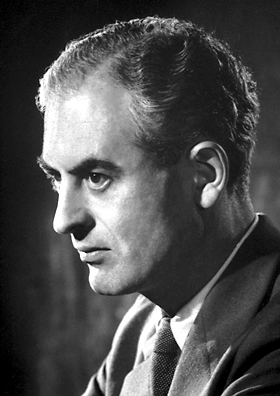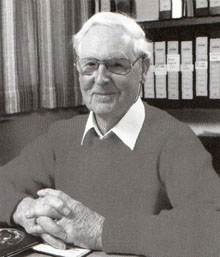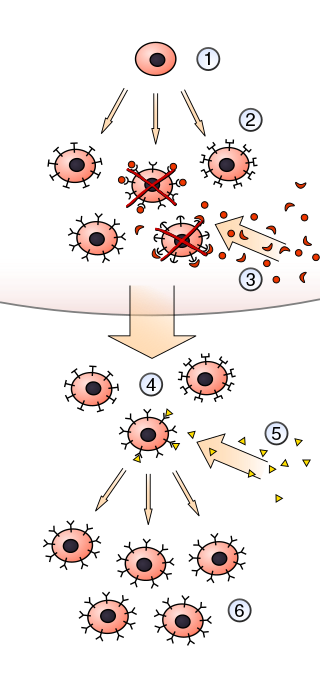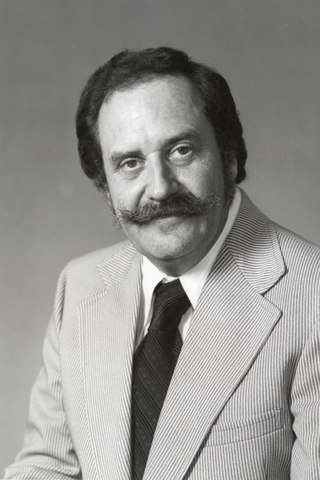
Sir Peter Brian Medawar was a Brazilian-British biologist and writer, whose works on graft rejection and the discovery of acquired immune tolerance have been fundamental to the medical practice of tissue and organ transplants. For his scientific works, he is regarded as the "father of transplantation". He is remembered for his wit both in person and in popular writings. Richard Dawkins referred to him as "the wittiest of all scientific writers"; Stephen Jay Gould as "the cleverest man I have ever known".

Sir Frank Macfarlane Burnet, usually known as Macfarlane or Mac Burnet, was an Australian virologist known for his contributions to immunology. He won a Nobel Prize in 1960 for predicting acquired immune tolerance and he developed the theory of clonal selection.

Frank John Fenner was an Australian scientist with a distinguished career in the field of virology. His two greatest achievements are cited as overseeing the eradication of smallpox, and the attempted control of Australia's rabbit plague through the introduction of Myxoma virus.

WEHI, previously known as the Walter and Eliza Hall Institute of Medical Research, and as the Walter and Eliza Hall Institute, is Australia's oldest medical research institute. Sir Frank Macfarlane Burnet, who won the Nobel Prize in 1960 for his work in immunology, was director from 1944 to 1965. Burnet developed the ideas of clonal selection and acquired immune tolerance. Later, Professor Donald Metcalf discovered and characterised colony-stimulating factors. As of 2015, the institute hosted more than 750 researchers who work to understand, prevent and treat diseases including blood, breast and ovarian cancers; inflammatory diseases (autoimmunity) such as rheumatoid arthritis, type 1 diabetes and coeliac disease; and infectious diseases such as malaria, HIV and hepatitis B and C.

The Australian Academy of Science was founded in 1954 by a group of distinguished Australians, including Australian Fellows of the Royal Society of London. The first president was Sir Mark Oliphant. The academy is modelled after the Royal Society and operates under a Royal charter; as such, it is an independent body, but it has government endorsement. The Academy Secretariat is in Canberra, at the Shine Dome.
Jerry McKee Adams, FAA, FRS, FAHMS, FRSV is an Australian-American molecular biologist whose research into the genetics of haemopoietic differentiation and malignancy, led him and his wife, Professor Suzanne Cory, to be the first two scientists to pioneer gene cloning techniques in Australia, and to successfully clone mammalian genes.
Jacques Francis Albert Pierre Miller AC FRS FAA is a French-Australian research scientist. He is known for having discovered the function of the thymus and for the identification, in mammalian species of the two major subsets of lymphocytes and their function.

In immunology, clonal selection theory explains the functions of cells of the immune system (lymphocytes) in response to specific antigens invading the body. The concept was introduced by Australian doctor Frank Macfarlane Burnet in 1957, in an attempt to explain the great diversity of antibodies formed during initiation of the immune response. The theory has become the widely accepted model for how the human immune system responds to infection and how certain types of B and T lymphocytes are selected for destruction of specific antigens.
Herman Waldmann FRS FMedSci is a British immunologist known for his work on therapeutic monoclonal antibodies. As of 2013, he is Emeritus Professor of Pathology at the Sir William Dunn School of Pathology at the University of Oxford.

The Australian and New Zealand Association for the Advancement of Science (ANZAAS) is an organisation that was founded in 1888 as the Australasian Association for the Advancement of Science to promote science.
Gordon Leslie Ada AO, FAA was an Australian biochemist best known for his seminal contributions to virology and immunology and his long leadership of the Department of Microbiology at the John Curtin School of Medical Research at the Australian National University, where Peter C. Doherty and Rolf Zinkernagel performed their Nobel winning research in his department. Both Zinkernagel and Doherty held him in high regard, and he was invited by them to attend the Nobel award ceremony and dinner in Stockholm.
This is a list of books and monographs by Sir Frank Macfarlane Burnet, arranged thematically, with original titles, publishers and dates of publication. Burnet wrote widely on virology, immunology and later in life on popular science issues. He wrote over 500 papers and 31 books, several of which were published in multiple editions; 15 of those books followed his retirement as director of the Walter and Eliza Hall Institute.
Suzanne Cory is an Australian molecular biologist. She has worked on the genetics of the immune system and cancer and has lobbied her country to invest in science. She is married to fellow scientist Jerry Adams, also a WEHI scientist, whom she met while studying for her PhD at the University of Cambridge, England.
Sir Marc Feldmann,, is an Australian-educated British immunologist. He is a professor at the University of Oxford and a senior research fellow at Somerville College, Oxford.
Sir Rutherford Ness "Bob" Robertson AC CMG FAA FRS HFRSE was an Australian botanist and biologist, and winner of the Clarke Medal in 1955.
Pamela J. Russell was an Australian academic researcher of immunology, bladder and prostate research. Russell was awarded Membership of the Order of Australia (AM) for her research on prostate and bladder cancer in 2003.
Ruth Milne Hall, OAM, FAA, FAAM is an Australian microbiologist whose research on mobile genetic elements in bacteria has provided deep insight into the transfer and evolution of antibiotic resistance in bacteria.

Peter Malcolm Colman is the head of the structural biology division at the Walter and Eliza Hall Institute of Medical Research in Melbourne, Australia.

Ray David Owen was a teacher and scientist whose discovery of unusual, “mixed,” red blood cell types in cattle twins in 1945 launched the fields of modern immunology and organ transplantation. Owen's 1945 findings were published in the journal Science. This observation demonstrated that self was “learned” by the immune system during development and paved the way for research involving induction of immune tolerance and early tissue grafting. When Frank Macfarlane Burnet and Sir Peter Brian Medawar were awarded their 1960 Nobel Prize in Physiology or Medicine for the discovery of acquired immunological tolerance, Owen was not mentioned in the prize. However, in a letter to Owen, Medawar stated that he believed Owen should have also been included in the prize. Owen also led the successful effort to admit women as California Institute of Technology undergraduates.

The Macfarlane Burnet Medal and Lecture is a biennial award given by the Australian Academy of Science to recognise outstanding scientific research in the biological sciences.









